Murderers, child abusers, scammers:
Where are they?

Two are accused of slaughtering their families. One is a dangerous child molester who escaped from custody. Another allegedly posed as a religious leader so he could assault girls. They are among the thousands of fugitives who avoid criminal prosecution in the United States every year. Find out more about these fugitives and join John Walsh in his quest to track them down and bring them to justice on "The Hunt."

Be on the lookout for these escaped convicts
On June 5, Richard Matt and David Sweat escaped from the Clinton Correctional Facility in Dannemora, New York. The hunt is on for the two men, who were serving time on separate murder convictions. If you have any information on their locations, please call 1-866-THE-HUNT or send us a tip online.
Got a tip? Call 1-866-THE-HUNT (In Mexico: 0188000990546) or click here
Join 'The Hunt'
What drives John Walsh?
After John Walsh's 6-year-old son, Adam, was kidnapped and murdered in 1981, he became a tireless advocate for victims' rights. His groundbreaking show "America's Most Wanted" is credited with helping law enforcement capture more than 1,200 fugitives and locating more than 60 missing children. Now, Walsh is returning to television with CNN's "The Hunt" and says he is ready to "saddle back up and catch fugitives."
Got a tip? Call 1-866-THE-HUNT (In Mexico: 0188000990546) or click here
Join 'The Hunt'
Shane Miller, 46

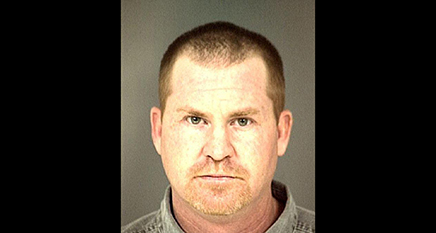

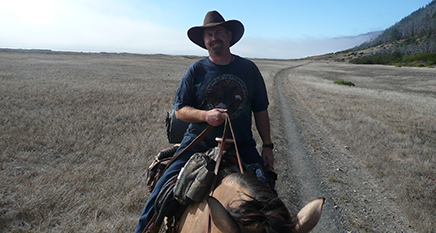
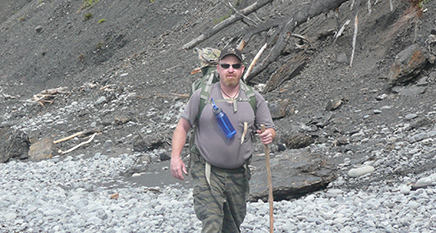
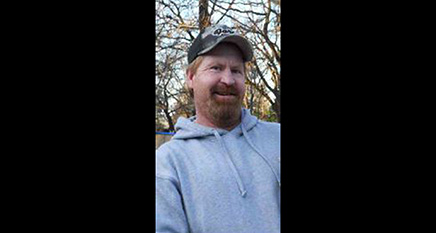


Update: Miller found dead in northern California
On May 7, 2013, a 911 dispatcher got a call from the residence of Shane and Sandy Miller in Shasta County in northern California. On the other line, the sounds of breathing and crying, then loud bangs before the line went dead. When police arrived at the Millers' house, they found the bodies of Sandy Miller and the couple's two daughters – Shelby, age 8, and Shasta, age 5 – with multiple gunshot wounds.
Miller came to the attention of local law enforcement about a month earlier, when his wife accused him of domestic violence, according to the sheriff’s department. It was his first run-in with Shasta County law enforcement and that arrest uncovered a lengthy criminal record, including a stint in federal prison, according to Sheriff Tom Bosenko.
Following that reported domestic violence incident in April 2013, Sandy Miller went with her two daughters to a local women’s shelter where she said that Shane had “been very agitated for three days” and “assaulted her, tortured her” and “was threatening to kill her whole family,” according to shelter advocate Mare Deutcher.
After the killings, Shane Miller, his truck and the family dog went missing. He quickly became the lead suspect in the case. The next day, he and his truck were spotted 200 miles away in Petrolia, California.
Miller, who grew up in the nearby town of Garberville, was spotted by an ex-girlfriend who called 911. That sparked a manhunt in and around Petrolia and law enforcement came within 10 minutes of nabbing Miller, according to Humboldt County Sheriff’s investigator Todd Fulton.
Miller ditched his truck and authorities believe he fled on foot into the mountainous forests of California's "Lost Coast," an area he knows well.
The hunt for Miller ended Sunday, August 3 when authorities announced they had found his remains in Petrolia, not far from where his truck was found.
The remains were reported Friday on the banks of the Mattole River, according to a statement from the Shasta County sheriff's office. They were identified through dental records. It was not immediately clear how long they had been there.
- Found dead: August 3, 2014
- On the run: Since May 7, 2013
- The crime: Prime suspect in the deaths of his wife and two young daughters
More on Shane Miller
- U.S. Marshals add Miller to most wanted list
- Manhunt for Miller like 'warfare'
- More details from U.S. Marshals (PDF)
Video
Got a tip? Call 1-866-THE-HUNT (In Mexico: 0188000990546) or click here
Join 'The Hunt'
Kevin Patrick Stoeser, 41

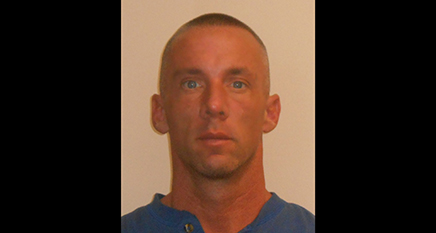
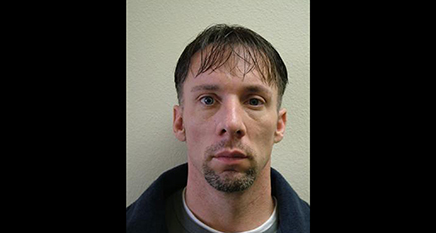



Mom: Stoeser "friended" my daughter
Update: Stoeser's remains found
Former U.S. soldier Kevin Patrick Stoeser pleaded guilty in 2003 to child sexual assault and child pornography charges and was sentenced to 13 years in prison. While he was on supervised probation at a halfway house in 2011, he was sent back to prison after engaging in electronic communications with underage girls. In August 2013, Stoeser was transferred to the Austin Transitional Center, a halfway house in Texas. Two months later, staff members allegedly caught Stoeser using a smart phone which authorities later found to have dozens of images of underage children. After the discovery, Stoeser immediately fled the facility through an emergency door exit and has not been seen since. The U.S. Marshals Service added Stoeser to its 15 most wanted fugitives in 2014, offering a $25,000 reward for information leading to his arrest.
Stoeser was born in Fort Pierre, South Dakota, in December 1972 to a mother who was raped by her stepfather when she was 13 years old. He joined the army when he was 21 and quickly moved up the military ranks to sergeant. A few years later, Stoeser struck up a relationship with a 16-year-old girl and within months, the two were married (because she was not legally old enough to marry on her own, he had to get permission from her parents) and had a daughter. Not long after, she left him citing verbal and emotional abuse and infidelity.
His military career ended with a dishonorable discharge following his 2003 conviction. Stoeser spent eight years in Fort Leavenworth’s military prison before he was sent to a halfway house with probation supervision in Rapid City, South Dakota, a couple of hours drive from his hometown of Fort Pierre. The Internet and electronic communication had come a long way since he was incarcerated in 2003 and Stoeser quickly picked up on Facebook, which he allegedly used to reach out to teenagers in Fort Pierre.
When Stoeser sent a Facebook friend request to teenager Tory Deal in 2011, neither she nor her mother, who went to school with Stoeser, thought much of it. Tory’s mother, Kara Deal, knew Kevin’s family in Fort Pierre and remembered him from high school as kind of “geeky.” And then Stoeser’s messages started getting more frequent and personal.
Tory Deal ignored the messages, until her friends at school said they were also getting messages from someone named Kevin Stoeser telling them how pretty they were and asking to hang out. Tory told her mom and a Google search quickly revealed that Stoeser was a high-risk sex offender who had spent time in prison for raping a young girl.
Kara Deal immediately warned her daughter to block all communication with Stoeser, and alerted police. Stoeser was sent back to prison for 18 months for violating his parole terms before he was released to a halfway house in Austin, Texas, where he escaped in October 2013.
After Stoeser's appearance on “The Hunt with John Walsh,” his remains were discovered by a dog in Austin, Texas in September 2014. Two months later, DNA tests confirmed it was Stoeser.
- Confirmed dead: November 2014
- On the run: Since October 2013
- The crime: Sex-based offenses involving minors
More on Kevin Patrick Stoeser
Got a tip? Call 1-866-THE-HUNT (In Mexico: 0188000990546) or click here
Join 'The Hunt'
Charles Mozdir, 32

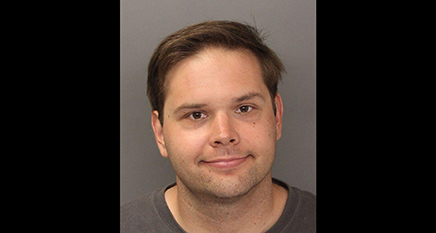

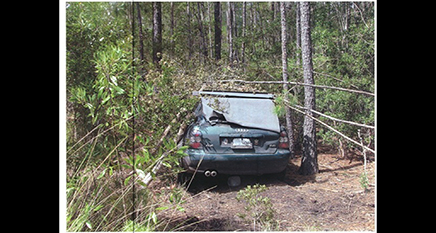
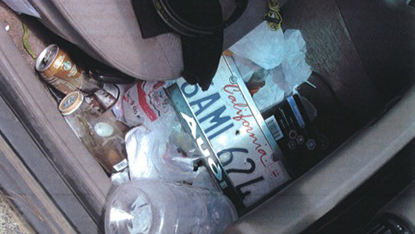
The standoff
Detective saved by bulletproof vest
John Walsh: 'He was hiding in plain sight'
Update: Mozdir killed in arrest attempt - July 28, 2014
Charles Mozdir's two friends thought they knew him: in school, Charlie seemed to take pride in never really fitting in with one group. When these two friends – who requested their names not be used -- got married, Mozdir was their wedding photographer. He was even present for the birth of their first child. Sure, Charlie seemed to have a secret life and told outlandish stories about his overseas travels – but the couple figured that was part of his eccentric nature.
Then, in June 2012, everything changed. The couple's now 7-year-old son was ill with a high fever and the mother was trying to take care of the couple's newborn daughter. The father, who was away at the time, insisted his wife call Mozdir to help out since he was a night owl anyway.
Despite her apprehension, she did call Mozdir and he came over to help watch the sick child. As she slept in the same king size bed with her son, Mozdir stayed awake by the bedside keeping an eye on the feverish child. The next morning, she thanked Mozdir for being "a great godfather" and she said "that was the last time I saw him." She said her son told her a short time later about how Mozdir had touched his private parts and told the boy this was normal and that his parents would be upset if he said anything to them.
The mother said she was physically ill after hearing this and, after telling her husband, they immediately went to the police. Coronado, California, investigators executed a search warrant on Mozdir's house and found evidence of child pornography and bestiality on his cell phone and computers, according to U.S. Marshals Service deputy Brian Grimes.
Mozdir was arrested four days after the incident and booked into the San Diego County jail before posting bail the next day. The district attorney told the couple that Mozdir had been accused in another child assault case when he was babysitting a young boy who told his mother. On June 15, 2012, Mozdir failed to appear at his arraignment.
Charges were immediately filed and arrest warrants were issued. Grimes said investigators believe he took all his money and fled. Mozdir indicated he was considering going to Mexico or Japan during one of his last phone calls. His roommate told police that Mozdir had two guns and had threatened to kill himself and kill a victim's father.
The Coronado Police Department and the U.S. Marshals Service searched for Mozdir in Georgia and California, as well as the Mexican state of Baja California. On June 20, 2012, Coronado police found Mozdir's abandoned vehicle hidden in the brush outside the coastal Georgia town of Darien. The license plate had been ripped off and there was an extra gas tank inside. A bloodhound picked up Mozdir's scent near U.S. Highway 17.
Then, for two years, Mozdir's trail went cold.
On July 20, 2014, when CNN first broadcast the episode of "The Hunt" featuring Mozdir, a deputy U.S. marshal fielding calls received a tip. "I know Mozdir. He left here 10 months ago," the caller said, according to Supervisory Deputy U.S. Marshal Steve Jurman. The call "really stood out," Jurman said, "because they mentioned that he had a dog.” The last time Mozdir had been spotted, Jurman said, his black Labrador, Lucky, was with him.
After CNN re-aired the Mozdir episode on the following Sunday, another tip came in that resulted in an address for Mozdir, John Walsh told CNN. Investigators learned that Mozdir may have been in Florida, and they contacted a female friend they had been in touch with previously. The friend told investigators that she thought Mozdir was living in New York City and possibly working at a smoke shop, a senior law enforcement official said.
On July 28, a New York police detective and two U.S. marshals entered a smoke shop in New York City where Mozdir worked. Mozdir "fired on officers at a very close range," New York Police Commissioner Bill Bratton said, and "officers returned fire." The officers were wounded during the shootout but are expected to recover, authorities said.
- Killed: July 28, 2014
- On the run: Since June 15, 2012
- The crime: Suspected child molester
Got a tip? Call 1-866-THE-HUNT (In Mexico: 0188000990546) or click here
Join 'The Hunt'
Bradford Bishop, 78

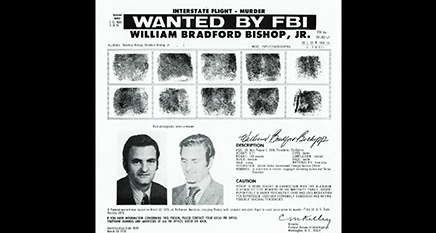

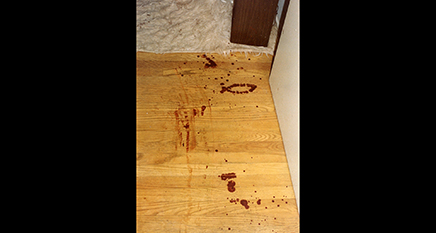


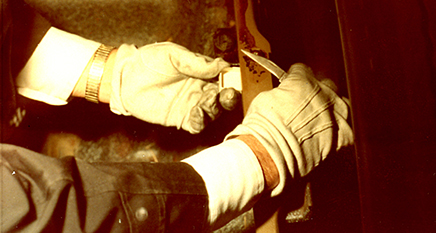

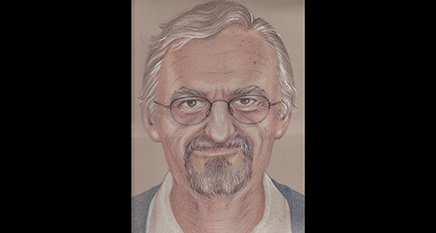

Burying the bodies
On the run
Update: FBI: Remains do not belong to Bishop
After living the life of an international diplomat at posts around the world including Italy and Botswana, Foreign Service officer William Bradford "Brad" Bishop Jr. settled with his family in the Washington, D.C. area in the early 1970s. Colleagues say the transition to a desk job was difficult for Bishop, a Yale graduate who spoke six languages and knew how to fly a plane. He, like a lot of his State Department colleagues, felt enormous pressure to be promoted.
"It's up or out," explained Foreign Service officer James Bruno. "If you don't get promoted to a certain position in a certain amount of time, you're out. We all take that very seriously in the Foreign Service," he said, but Bishop "took it much more seriously than I guess the rest of us did."
When Bishop, who was 39 at the time, learned he had been passed over for a promotion on March 1, 1976, he left his job at the State Department early, telling his secretary he felt ill. He went to a hardware store, where he purchased a small sledgehammer and a gas can before heading to his home in Bethesda, Maryland. That evening, police say, Bishop fatally bludgeoned his mother, his wife and their three sons – ages 14, 10, and 5 -- with the hammer.
Police say that Bishop, after killing his family, loaded their bodies into the family's station wagon and drove about five hours south to Tyrrell County in eastern North Carolina. There, in a heavily wooded area, they claim, he dumped their bodies into a shallow grave and set them on fire. Rising smoke alerted a ranger and authorities soon discovered the bodies. A massive manhunt ensued.
About 2½ hours south of the grave site, Bishop was spotted in a store near Jacksonville, North Carolina buying a pair of tennis shoes with his credit card, authorities said. The station wagon – still covered in blood -- was found abandoned in a parking lot at the Great Smoky Mountains National Park, hundreds of miles west of where the bodies were found.
In the days before DNA profiling and the Internet, it took a lot of old-fashioned detective work to trace the bodies back to Bethesda. The only clue investigators had was a price tag on a shovel left at the grave site with the letters "OCH HD." North Carolina state investigator Lewis Young said he and a colleague drove around the region looking for a hardware store with those letters in the name, and called law enforcement across the region for assistance. When they reached out to Washington Metropolitan Police, they learned there was a "Poch" hardware store in Potomac, Maryland. Not sure how to proceed, Young and his colleague headed to Potomac, where they posted a flyer with images of the unidentified victims' faces inside the hardware store, before returning to North Carolina.
Around the same time, the Bishops' neighbors had told authorities they hadn't seen the family in a week, and mail and newspapers had piled up at the residence. When Montgomery County police entered the Bishop home, they found what officer Mike McNally described as a "horror house," with blood everywhere.
Montgomery County authorities found the flyer that the North Carolina investigators left at Poch Hardware, and determined that the unidentified bodies found in North Carolina were the missing Bishop family.
McNally said he'll never forget the hammer marks on the ceiling above the top bunk bed in one of the boys' bedrooms. "The number of marks, you know, how many times he must have hit his son," McNally said.
There have been three credible sightings of Bishop since he disappeared in 1976: a Swedish woman and former acquaintance said she spotted him in Stockholm in July 1978; a former neighbor said she saw him on a train platform in Basel, Switzerland, in September 1994; and a former colleague stood next to him in a men's room in Sorrento, Italy, in January 1979.
"I thought he was a vagrant," said retired Foreign Service officer Roy Harrell, who saw Bishop in Sorrento. "He was standing there and I came and stood right next to him, and for some reason turned. In my mind's eye I stripped off the beard, and saw the Foreign Service officer I had seen in Washington, D.C. I just impulsively said, 'You're Brad Bishop, aren't you?' And he began trembling and shaking and said 'Oh God, no' and turned around. I have no doubt it was him."
This year, the FBI added him to its Ten Most Wanted fugitives list and commissioned a forensic artist to create a bust of what Bradford might look like today as a man in his late 70s.
- On the run: Since March 1976
- The crime: Wanted in the deaths of his mother, wife and three sons.
- Where could he be: Anywhere. A former diplomat, Bishop has ties to Europe and Africa, but he could also be in Maryland, North Carolina, or elsewhere in the United States.
More on Bradford Bishop
Got a tip? Call 1-866-THE-HUNT (In Mexico: 0188000990546) or click here
Join 'The Hunt'
David Burgert, 50

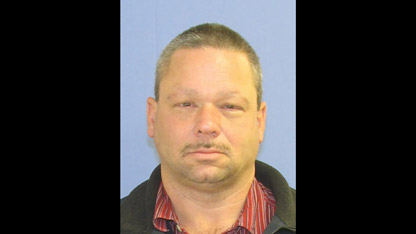
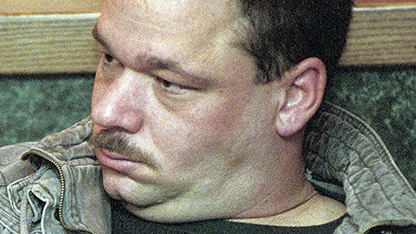
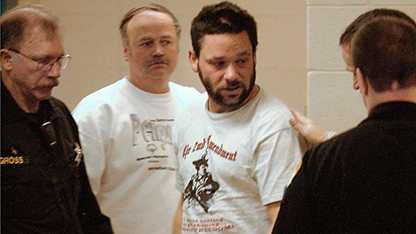
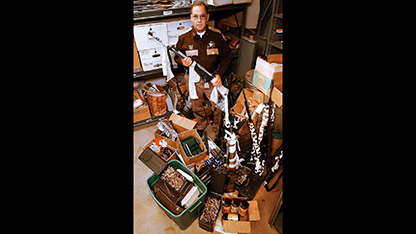
Police tell how Burgert eluded them.

Montana is no stranger to people who espouse anti-government sentiments. Some are simply concerned about the federal government and higher tax rates. Others share more extremist views.
And then there's David Burgert.
"He's the kind of guy who would do whatever he could to provoke you. I just think he felt things should be his way," Flathead County Sheriff Chuck Curry said.
When he was younger, friends and family say, Burgert wanted to help others, particularly "people whom he perceived to be weaker," according to journalist Jamie Rogers. So he decided to enlist in the Marine Corps.
"I think in his mind, joining the military was a way for him to get to be a hero, to live out his fantasies of helping and saving people," said Rogers, who has interviewed Burgert's family and friends and written extensively about him.
"When he got there, guys (were) screaming in his face every day, (and that) didn't work with his chemistry."
By the time he left the Marines, "violence had become a main form of expression," Rogers said. "His mother says that he used to press his jeans, put on a cowboy hat and get really gussied up to go fight."
Burgert had numerous encounters with law enforcement, starting in 1985, according to Rogers, with a bizarre drunken incident in which he broke into a trailer to eat a sandwich and, when he took off, left his loaded gun behind.
He called police to get his pistol back, and they arrested him. He served four years in prison for that incident.
After his release from prison, he applied to join a search and rescue team in Flathead County, but his criminal background prevented that.
"So he just becomes this like citizen watchdog, in his mind," Rogers said.
But he maintained a very hostile relationship with law enforcement. "He was just one of those very confrontational individuals," Curry said.
Rogers put it this way: "The guy was notorious for just being a pain in the ass."
In 2002, an FBI and police investigation uncovered that Burgert had been the leader of a militia group known as Project 7, based in the Kalispell, Montana, area.
The militia's No. 2, Larry "Chance" Chezem, said Project 7's focus was to be active participants in the republic to "keep government in line."
But Curry disagreed. "The goal of this group was to assassinate people who had wronged them."
After authorities found a massive stockpile of ammunition and weapons -- including illegal machine guns – Project 7 members including Chezem and Burgert were arrested and convicted of federal weapons violations. Burgert was sent back to prison, this time for about seven years.
After his released from prison -- reportedly in March 2010 -- Burgert was allegedly squatting at a campsite near Lolo, Montana, about 10 miles outside Missoula, when someone called 911 to report suspicious behavior. After Missoula County deputies arrived to investigate, Burgert fled the scene in his Jeep Cherokee.
After a long car chase, Burgert drove off-road, got out of his car and fired at the officers. They returned fire, but when they approached Burgert's car, they found that he had disappeared in the woods. A five‐day manhunt with cadaver dogs never found any trace of him.
To this day, Burgert remains missing and is wanted by U.S. Marshals. They say he is a skilled survivalist and consider him to be armed and dangerous.
- On the run: Since June 12, 2011
- The crime: Firing on two sheriff's deputies
- Where could he be: Unknown
More on David Burgert
Got a tip? Call 1-866-THE-HUNT (In Mexico: 0188000990546) or click here
Join 'The Hunt'
Christopher Ponce, 24


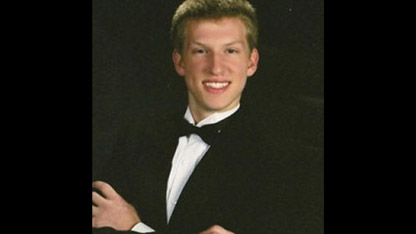
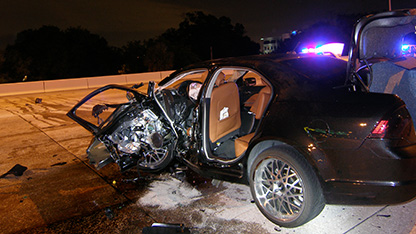

In the early hours of July 19, 2012, William Angel, 20, and two friends were driving home from a night out in Tampa, Florida, when their car was struck head-on by a vehicle traveling the wrong way on an interstate. Angel was killed instantly, and his two passengers were seriously injured.
Jay Davis, who was sitting in the back seat, remembers seeing headlights coming toward them as Angel merged onto an exit ramp.
"When I opened my eyes, I was laying through the windshield, face-down on the engine," said Davis, who had been best friends with Angel since middle school. "The first thing that really crossed my mind was, 'How am I outside? What the hell happened?' "
Davis heard his friend Robert Newberry yell from inside the car, and the two young men kept talking to try to keep conscious. They didn't hear from Angel and assumed he had been knocked out from the impact.
A short time later, Davis realized that the situation was much worse than he thought.
"The paramedics arrived ... (and) I started arguing with the paramedic (to get William first)," Davis recalled. He said he heard someone indicate there was a body.
"I'm still arguing with him about Will, and he just says to me, 'He didn't make it.' And that was the first time that I heard that I'd lost my best friend," Davis said.
The driver of the other vehicle, Christopher Ponce -- 22 years old at the time -- was treated for his injuries before he was arrested and charged with reckless driving, DUI manslaughter and vehicular homicide, according to Florida Highway Patrol Sgt. Steve Gaskins, who was one of the first to respond to the accident scene. Ponce had a previous DUI arrest, and his license had been suspended after a variety of infractions across the state of Florida.
"There are people that really shouldn't be on the road behind the wheel of a car, that really should be in jail, and Christopher Ponce is one of those people," Gaskins said.
During his bond hearing, the presiding judge criticized Ponce for his actions, saying, "I think you were drunk. I think you were lucky you didn't have a girlfriend in the car that didn't die." Nonetheless, he released Ponce on bail and required that he wear a GPS ankle monitor while awaiting the results of a toxicology test. The judge issued a stern warning to Ponce: If the test results showed that Ponce had been under the influence, he would be sent to jail.
But when the toxicology report came back, showing that Ponce's blood-alcohol level was almost twice the legal limit, the presiding judge recused himself because of his comments to Ponce during the bond hearing.
The new judge allowed Ponce to remain out on bond. The Angel family was shocked and angered by the decision.
"You kill somebody with a gun, you're not allowed out on bail. You kill somebody with a car – I mean, he still killed him," said William's mother, Lynn Angel. "So why is he given the privilege of being home?"
During the nine months Ponce was under house arrest, he was allowed to remove the monitor during MRIs for a broken ankle he sustained in the crash.
On May 9, 2013, Gaskins got a call that Ponce had removed his ankle monitor and disappeared. Police believe Ponce's family or friends may be helping him evade authorities. The family started a website to try to find Ponce and face charges in the death of William Angel.
"All it takes is one little mess-up, one little detail to catch somebody," William's brother Wade said.
- On the run: Since May 9, 2013
- The crime: Wanted for DUI manslaughter
- Where could he be: Florida, Cuba, or other Spanish-speaking countries
More on Christopher Ponce
Got a tip? Call 1-866-THE-HUNT (In Mexico: 0188000990546) or click here
Join 'The Hunt'
Guillermo Madrigal Ballesteros, 56

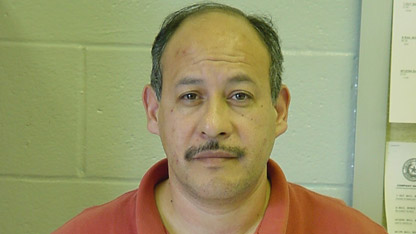
Guillermo Madrigal Ballesteros is wanted for organizing the transport of illegal immigrants.
Journey ends in tragedy
'You're seeing all your friends dying in front of you'
On October 14, 2002, B.J. Schany was busy at work filling dozens of rail cars full of corn from a grain elevator in Denison, Iowa. When he went to open the lids on the second set of rail cars, he came across a grisly discovery.
"The rail car was locked, I remember unlatching the lock on the top hatch," Schany recalled. "I've done that hundreds if not thousands of times before and never, never ever had anything close to something like this happen."
Inside that rail car were the decomposed bodies of 11 men and women. An examination of the remains later determined that all had died of dehydration and hyperthermia. The rail cars had originated in Mexico before making the journey to a storage facility in Oklahoma where they sat for four months, according to Tom Hogan, former sheriff of Crawford County, Iowa.
"Whatever had transpired there had transpired months prior to coming to Denison," Hogan said. "We were pretty sure we were dealing with someone trying to enter the United States illegally."
Hogan said investigators believed the 11 men and women had "probably entered the railroad car on their own free will but then someone had closed the latch and locked it so that it couldn't be opened."
"It didn't look like a murder in the traditional sense," Hogan said. Nevertheless, that's what the evidence was beginning to indicate.
Documents inside the rail car identified the people as nationals of Mexico, Honduras, and Guatemala, according to Alonzo Martinez, a former district director with Immigration and Naturalization Service who worked on the case.
"Somebody was responsible for these 11 people who perished inside this car, and we were looking for somebody that we were going to hold accountable," Martinez said.
Investigators got a big break when Eliseo Acevedo reached out to INS, looking to find his missing brother.
"He was afraid that one of those bodies was going to be his brother," Martinez said. "Eliseo told us that he was living in New York when his younger brother called him to tell him that he was in Harlingen (Texas) and he needed money to pay the smugglers."
Eliseo Acevedo -- a Guatemalan immigrant who lives in Katonah, New York -- agreed to pay $300 to get his 18-year-old brother to Houston.
"I said to him, if you're going to make the next move, don't put yourself in any danger," Acevedo said. "My hopes were that he would call me from Houston and tell me 'I'm here.' "
That never happened. Byron Acevedo was identified as one of the 11 bodies inside the train car.
After the news had spread about the grisly discovery in Denison, Iowa, Acevedo received a phone call from a man who identified himself as "Memo" who told him he had nothing to do with his brother's death.
"During this phone conversation, he also told him the composition of the group," Martinez said. "He said there would be four women and seven men, and we found that quite interesting."
That's because the gender breakdown of the so-called "Denison 11" had not been publicly released.
Investigators identified "Memo" as Guillermo Madrigal Ballesteros, a Mexican national based in Mexico City who is accused of helping to smuggle people from Central America into the United States through Mexico between January 2000 and February 2003 – including these 11 men and women. Martinez described Madrigal – who goes by "Memo" or "Don Memo" -- as "one of the main operators of this smuggling operation."
At the time, authorities didn't have any photos or identification for Madrigal, although they had been tracking him and other members of the alleged smuggling ring, according to retired anti-smuggling agent Gabe Bustamante.
"I decided we needed to identify him," Bustamante said. "We called the Harlingen police department, they were able to pull him over on a traffic violation."
They took him into the station and took a couple of photographs. Bustamante alerted Martinez who asked the federal prosecutor to proceed with charges against Madrigal in relation to the smuggling operation. But the assistant U.S. attorney said it was too early.
"As hard as it was, we had to tell the police department to let him walk," Martinez said.
More than a decade after the immigrants' deaths, federal authorities decided last summer to dismiss the case against Madrigal without prejudice, meaning it can be reopened if he's arrested. Assistant U.S. Attorney Michael Wynne explained that keeping the case open became a burden for Homeland Security, saying they were liable for keeping people who would otherwise be undocumented immigrants in this country indefinitely as potential witnesses for a trial that likely would never occur. Wynne says there's reason to believe that Madrigal may be in Texas and possibly involved in the illegal transport of immigrants. That brings a new sense of urgency to the efforts to apprehend him, Wynne said.
"Nothing can bring my brother back but I think the responsible people … should have been arrested now and in jail," said Eliseo Acevedo.
Read this story in Spanish (Lea este artículo en español)
- On the run: Since 2003
- The crime: Accused of organizing the transport of illegal immigrants
- Where could he be: Mexico, Texas
More on Guillermo Madrigal Ballesteros
Got a tip? Call 1-866-THE-HUNT (In Mexico: 0188000990546) or click here
Join 'The Hunt'
Frederick McLean, 63

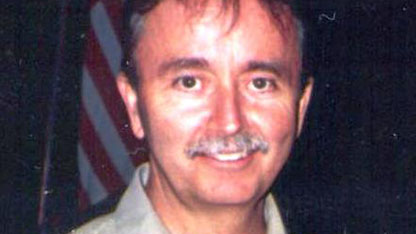


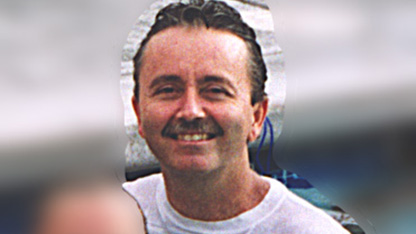
Accuser tells her story

Rick McLean was a trusted member of his Riverside, California, community, his former neighbors and friends say. He was involved in a Jehovah's Witness congregation and had a passion for restoring classic race cars.
"We started doing family things with (the McLeans) right after their daughter was born," neighbor Deborah Wesche recalled. "They wanted to go on vacation with us in the summers; they invited us over to dinner a lot, so we ended up doing a lot of things with the McLeans."
Rick McLean was particularly interested in hanging out with the children, Wesche's daughter Andrea said.
"It (was) like, 'Do you guys want to go like play games at the arcade? Or do you want to go get ice cream?' " Andrea Wesche said. The kids and parents thought it was OK since McLean "was definitely respected in the church (and) he was definitely trusted, well-liked."
Wesche, now 27, said she and her brothers would spend the night at McLean's house, and that's when she said he began molesting her.
"This started probably around 8, it went on for about -- I would say till I was about 13," Wesche said. "I didn't really know what to do. So I just didn't say anything.
In the spring of 2004, a girl from McLean's church confronted him "and said point-blank, 'You molested me.' And he admitted to it in front of her, in front of the adults, and in front of his wife," said Tom Maranda of the U.S. Marshals Service in San Diego. "That was the dam-busting moment, and the floodgates opened from then."
Shortly afterward, the Wesches got a phone call from McLean's wife, Nancy.
"She said, 'You need to talk to your daughter,' " Deborah Wesche recalled. "I called her up to my bedroom and as soon as I said it, I knew that it had happened to her. I could just tell by her face, by the look on her face. So, and then, I said, 'Did anything happen to you?' and she said yes and she started crying."
McLean started selling off his businesses and other assets, including his race cars, Maranda said. His wife and family left him, Maranda said, and then he disappeared. He had left a truck behind to be sold by his family along with a map with directions to a secret stash of money. After tracking down that location, Maranda came up empty-handed.
By the summer of 2004, other allegations of sexual abuse surfaced, and McLean was later charged with 15 counts of sexual assault on four children – including Andrea Wesche -- according to Maranda.
The U.S. Marshals Service said they believe McLean fled with at least $100,000 in cash, possibly in a small, dark-colored pickup, and may have changed his name and appearance. He is an experienced camper, often frequenting Southern California's Anza-Borrego Desert State Park and Cuyamaca Mountains, and he also knows a lot about restoring classic race cars.
The marshals suspect McLean has been molesting girls for at least 25 years and they said he remains a threat.
"The hardest part about this case is that I know after nine years that this guy is still out there," said Don Allie of the U.S. Marshals Service in San Diego.
- On the run: Since September 2004
- The crime: Suspected child molester
- Where could he be: Investigators believe McLean is still in northern San Diego County or the southern Riverside area, but he could be anywhere. He is an experienced camper and has frequented the Anza-Borrego Desert and the Cuyamaca Mountains.
If you would like the most up-to-date details about the Frederick McLean case, please call (800) 205-4876.
More on Frederick McLean
Got a tip? Call 1-866-THE-HUNT (In Mexico: 0188000990546) or click here
Join 'The Hunt'
Thayne Smika, 55


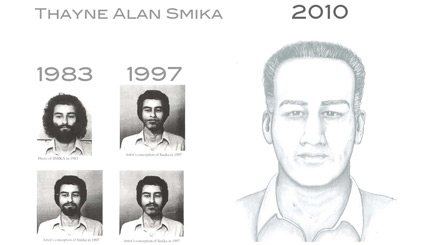
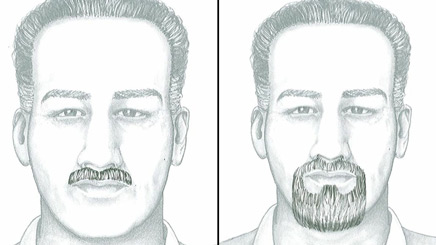
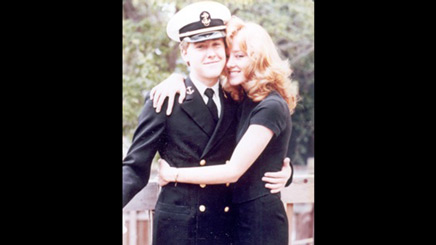
Police find a weapon
In the summer of 1983, 22-year-old Sid Wells was living with his older brother in their family's Boulder, Colorado, condominium and studying journalism at the University of Colorado. Sam and Sid Wells needed a third roommate to help with rent, so they posted an ad which was answered by 24-year-old Thayne Smika, a Colorado State University graduate from Akron in eastern Colorado.
"They felt like he was a good candidate for a roommate," the brothers' mother June Menger recalled. But, after Smika moved in, they realized he wasn't very sociable and, Menger said, "I think he was having trouble coming up with the rent money."
On August 1, 1983, Sam Wells returned from a camping trip to find his brother lying face down on the floor inside the apartment. He immediately called police, his shock apparent in the 911 recording. Sam Wells still struggles with talking about that day. "There was just no sign of life whatsoever," Wells said.
For the past three years, Wells had been dating Shauna Redford, daughter of actor Robert Redford, and she had seen him just a few hours before he was killed. She was devastated, June Menger recalled.
"Shauna quit college. She grieved in ways that I can't even imagine," Menger said.
Wells had been shot in the back of the head at close range. After police ruled his brother out as a suspect, they began to focus on Smika. Wells' friend told police that the morning of Wells' death, Smika "was supposed to return some money to Sid," according to former Boulder County deputy chief Dave Hayes. "And in addition to paying the rent (he) was also going to give Sid some additional money and some cocaine." Wells' friend told police that Wells had been selling small amounts of cocaine in recent months, according to Hayes.
After testing the crime scene, interviewing Smika at his mother's home, and finding a 20-gauge shotgun there – the same weapon Wells had been killed with -- police arrested Smika on October 6, 1983, for first-degree murder.
"We heard Thayne Smika had been arrested, we were elated, and I thought, 'Oh, you know, got the family settled down and law enforcement did their job. Boom, we're going to get the rest of the story now and really find out what happened to Sid,'" his brother Rob Wells said.
Then they learned that prosecutors had declined to charge Smika with the killing, saying there wasn't enough evidence.
Hayes never gave up on getting justice for the Wells family and, in 1997, Boulder police reopened the case. With the FBI's help, they established new forensic and ballistic evidence linking Smika to the murder.
In December 2010, the Boulder County district attorney signed off on an arrest warrant accusing Thayne Smika of first degree murder, but he has yet to be located. Boulder police believe he may have a new identity and he may be working as a bookkeeper or accountant. Recent information indicates he may be living near Puerto Vallarta, Mexico.
June Menger, who is suffering from a terminal illness, is hoping to see Smika brought to justice for the murder charges against her son.
"I don't know that I'll live long enough to see a resolution in this case, but I would hope that I can, and I've never given up hope," she said.
- On the run: Since 1986
- The crime: Suspect in the killing of his roommate
- Where could he be: Puerto Vallarta, Mexico
More on Thayne Smika
Got a tip? Call 1-866-THE-HUNT (In Mexico: 0188000990546) or click here
Join 'The Hunt'
Victor Barnard, 52


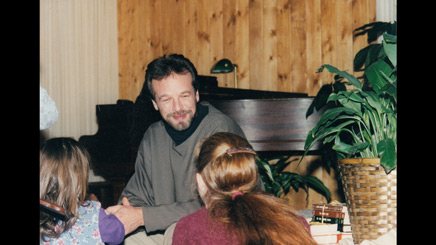

Lindsay Tornambe: I was a victim
'He's the anti-Christ'
Update: Barnard arrested in Brazil
As a pastor, Victor Barnard inspired his congregants with his charisma and apparent devotion to the teachings of Jesus Christ.
"I had never met anybody that I thought loved the word of God as much as Victor Barnard did," said Ruth Johnson, a former member of Barnard's River Road Fellowship.
"He was a pastor; he basically took personal care in people, invested into them, and tried to bring the best out of you," said David Larsen, a former leader of the River Road Fellowship, which consisted of about 10 to 15 members.
Larsen said he helped Barnard set up a so-called "shepherd's camp" in the mid-1990s in Pine County, Minnesota, to help bring more people into the church. Several of his congregants, including Johnson, moved to the rural area about 100 miles north of Minneapolis to be a part of the camp.
"We sold our homes and the funds went into renovation and things that needed to be rehabbed," Johnson said. Some congregants who had experience in construction and electrical work helped set up the camp, she said.
Pine County Sheriff Robin Cole said the congregation "kept to themselves."
Barnard also traveled across the country trying to recruit new members into his fellowship, including Linsday Tornambe's parents in Harleysville, Pennsylvania, outside Philadelphia.
"Victor Barnard came and visited my parents when I was 9. … He gave my parents some of his books and teachings that he had done," Tornambe said. "My parents started making trips out to Minnesota and they were sending money to Victor."
Eventually, Tornambe said her parents packed up the family and moved to Minnesota to join the congregation.
In June of 2000, the charismatic religious leader allegedly convinced some members of his congregation to hand over their firstborn daughters to live with him in the secluded campsite.
"Victor Barnard did a teaching. He said that all the first-born children were supposed to be sacrificed to God," Tornambe said. "And he listed off 10 girls' names."
Linsday Tornambe's name was called and her parents allowed their 13-year-old daughter to join the group of girls at the camp, called "The Maidens," under Barnard's supervision. She and other congregants said the girls got up early, sewed, cooked, and cleaned for Barnard. "Everything that a wife would do, they did for him," said Johnson.
"He taught that in the Bible, the church was the bride of Christ and because he was Christ in the flesh, the church was supposed to be married to him," Tornambe said. "At that time I didn't really understand the fullness of what it meant."
About a month after her parents had dropped her off at the camp, Tornambe said Barnard started having sex with her and warned her not to tell anyone.
"Victor told me that if I told anyone, I would receive damnation from God," she said. Then she later learned he was allegedly having sexual relations with other girls as well as some of the married women at the camp.
Police first became aware of Barnard in late 2009 and 2010 when some men from the congregation alleged that he was sexually abusing their wives, according to Sheriff Cole.
"There was a rumor that there was a group of young girls that were these maidens and that something may be going on," Cole said. "But no one was coming forward saying 'I saw it, I know exactly what happened.' And we certainly had no victims at that time coming forward saying; 'I'm making an allegation that he sexually abused me.' "
Around that time, Barnard addressed his congregation, which was starting to fall apart.
"Victor had told us that there were people speaking evil of him in the church and it was time for him to leave Minnesota," Tornambe said. "So basically he was going into hiding. He took a bunch of the believers with him and they eventually ended up in Spokane, Washington. Some of the believers moved to Wisconsin."
After that, Tornambe decided to tell her aunt and uncle in Minnesota about Barnard.
"They asked me if I knew what Victor had done was a crime. That he had raped me. It kind of hit me all of a sudden how much of my life had been stolen from me," Tornambe said.
In 2012, she told police investigators that Barnard had sexually assaulted her one to three times a month from age 13 until she left in 2010 at age 22. A short time later, another female from the congregation came forward with similar allegations.
In April 2014, prosecutors charged Barnard with 59 counts of criminal sexual conduct with the two young girls while they were members of his church, and a nationwide manhunt ensued.
Washington State Patrol reported a credible tip that Barnard was in Raymond – a coastal town about two hours outside Seattle – on August 13, 2014. They believed Barnard may have been in the area for at least a week. Previously, he'd been spotted in the Spokane, Washington, area. In late February 2015, Brazilian police arrested Barnard in the northeastern part of the country after a five-month investigation. He faces an extradition process that could take years.
Tornambe, now in her late 20s and expecting her first child, still has nightmares about her experience in Minnesota. She severed her relationship with her mother and sisters because they still support Barnard even after she told them what he had done to her.
"I still have two sisters and my mom out in Washington State still believing this man who raped me when I was 13," Tornambe said. "My heart is to help them and for them to get out. I mean at this point I feel like they're brainwashed."
- Arrested: February 2015
- On the run: Since April 2014
- The crime: Charged with 59 counts of first-degree criminal sexual conduct
More on Victor Barnard
Got a tip? Call 1-866-THE-HUNT (In Mexico: 0188000990546) or click here
Join 'The Hunt'
JACOB WETTERLING'S ABDUCTOR

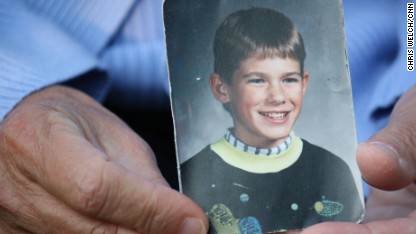
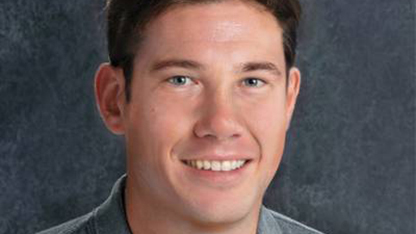

The night of Jacob's abduction
Patty Wetterling: We'll never give up
“I want answers. I want to know who took Jacob, what happened.”
It’s been 25 years since Patty and Jerry Wetterling’s 11-year-old son, Jacob, was abducted while riding his bike with his brother and a friend in rural St. Joseph, Minnesota. Jacob had been at home with his two younger siblings, Trevor, 10, and Carmen, 8, and Jacob’s friend Aaron Larsen, 11, while the Wetterlings attended a dinner party about 20 minutes away.
“We weren’t going to be gone very long, and they were just going to stay home,” Patty recalled.
After getting permission from the Wetterlings, Jacob, Trevor and Aaron grabbed a flashlight and rode their bikes and scooter to a nearby Tom Thumb convenience store to rent a movie.
The three boys headed back from the store at about 9:15 p.m. and, as they approached a dark stretch of road, they heard a low raspy voice demand that they stop. Trevor was told to turn off his flashlight.
A man with a gun wearing a stocking mask stepped out from the darkness and told the boys to get into a roadside ditch.
“He asked one by one what their age was,” Jerry Wetterling said, recounting what Trevor and Aaron told authorities. “After that, he had Trevor and Aaron, one by one, run off into the nearby woods (and told them) not to look back or else he would shoot.”
As Aaron fled, he said, he saw the gunman grab Jacob by the arm. Moments later, both boys looked back as they ran toward the Wetterlings’ home. There was no sign of Jacob, the masked man, or any sound from a getaway vehicle.
“Everybody thought that within a few hours we would get it taken care of,” said Stearns County Sheriff John Sanner.
As news of the disappearance spread, FBI agents and National Guard troops descended on the quaint town of St. Joseph to aid in the search. Everyone came up empty-handed.
Tens of thousands of tips surfaced in the weeks that followed, but none panned out.
Investigators began looking into an incident about nine months before Jacob’s abduction: A 12-year-old boy had been pulled into a car and molested while he was walking home alone in Cold Spring, Minnesota. When the man dumped the boy out of the car, he was told to run. If he didn't, he would be shot.
Not only did the methodology fit, but so did the geography: Cold Spring is about 10 miles away from St. Joseph.
A sketch of the suspect was issued but it led nowhere.
The case got new attention in 2010 when freelance writer Joy Baker started looking into the Wetterling case. She tracked down news reports about a series of attacks on teenage boys in Paynesville, Minnesota – about 30 miles from St. Joseph and 10 miles from Cold Spring – between March 1986 and the summer of 1989.
According to those reports, the perpetrator also approached the boys in a car as they walked down the street and, in some instances, allegedly told his victims not to turn around or they would be shot.
Baker told Jared, the survivor of the Cold Spring abduction in 1989, about her discovery.
“Those attacks sounded so similar to his case and to Jacob’s case, I asked him, ‘Have you ever heard of these before?’ and he’s like, ‘No, I’ve never heard that before,’” Baker said.
“I think there’s a very strong possibility that the cases are linked. How many psychopathic pedophiles can exist in a 15- to 20-mile radius?”
Baker said her investigation led her to a man who was arrested in 1990 and convicted of sexually assaulting four boys. The man was “looked at early in Jacob Wetterling’s abduction and is still being looked at,” according to Baker.
“What we’re trying to do now is connect him to both Jared’s case and to St. Joseph,” she said.
Sanner declined to talk about specifics because the Wetterling case is “still an active and open investigation.” He noted that bloggers and journalists like Baker “can speculate,” which he called “a healthy process in a criminal investigation.”
“But in order to prove it we have to have fact, and that’s the piece that’s missing in the blogging,” Sanner said.
Patty and Jerry Wetterling have spent more years looking for their son than they spent raising him. He would be 36 today, with brown hair, blue eyes, possibly about 6 feet tall.
Since her son's kidnapping, Patty Wetterling has become an advocate for families of missing children. After helping create the sex offender registry for Minnesota and subsequently for the nation, she helped build Team HOPE -- Help Offering Parents Empowerment -- a parent-to-parent mentoring program for mothers and fathers in similar situations.
"Most parents know nothing about child abduction, so when it happens you just scramble for what's out there," Wetterling says.
"These kids do not come running forward on their own. They are found by someone else," she explains. "The bottom-line lesson is to tell people to report things when they see them. Trust your instincts. ... You'd want somebody sticking up for your child, so don't second-guess. And call."
Police believe Jacob Wetterling’s abductor is of average height and weight with a deep, raspy voice, and could be in his early 50s today.
- On the run: Since 1989
- The crime: Child abduction
- Where could he be: Unknown
More on Jacob Wetterling's abduction
Got a tip? Call 1-866-THE-HUNT (In Mexico: 0188000990546) or click here
Join 'The Hunt'
Genevieve Kelley, 50

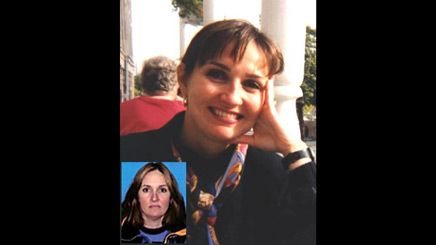
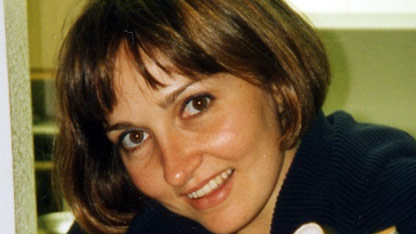
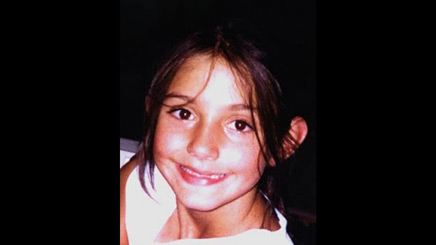


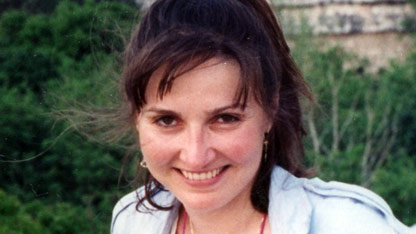

Update: Kelley turns herself in after 10 years
Daughter returns ahead of Kelley's trial
Mary Nunes grew up in Whitefield, New Hampshire, between two feuding parents, Genevieve San Martin and Mark Nunes, who divorced in 1998 when Mary was just 2 years old. The two divorced parents wouldn’t even talk to each other. Instead, they’d send a notebook with Mary to relay their communications about drop-off and pick-up times.
The first accusations of abuse that Genevieve leveled against Mark stemmed from Mary’s perceived weight loss during her visits with her father, according to investigators. Later, she accused Mark of abusing Mary during a visit to Littleton, New Hampshire. The sheriff’s investigation found no basis for the accusations and charges were not filed.
Genevieve and her new husband, Scott Kelley, decided to make a videotape at their Whitefield home to document what she believed were signs that Mary had been victimized. Then-Whitefield Police Chief Wayne Rioux watched the tape for “any evidence of wrongdoing by Mark Nunes.”
“But throughout the tape all I saw was this bizarre, strange conduct by the mother, who was absolutely brainwashing the daughter and trying to get the daughter to say things against her daddy,” Rioux said.
On the tape, which has not been publicly released, Rioux said, Mary Nunes at no point says anything negative or incriminating against her father.
"I was totally shocked. The moment I saw that tape, I stopped looking at Mark as the abuser," Rioux said. "It was clear that we needed to take a closer look at Genevieve."
But that never happened. Genevieve and Scott Kelley, who had moved to Colorado, failed to show up at a custody hearing in New Hampshire. The court gave Mark Nunes full custody of Mary, who by that time was 8 years old.
Genevieve Kelley later refused a court order to return Mary for evaluation in New Hampshire.
Then, the Kelleys and Mary Nunes disappeared altogether. The U.S. Marshals issued a warrant in 2006.
With the help of private investigator Phil Klein, Mark Nunes set up a website and a special phone number, hoping the reach of the Internet would help him find his daughter, who is now 18.
“We began to get phone calls with ‘Hello’ and then a hang-up,” Klein said. “Most of the phone calls were coming from the São Paulo, Brazil, area.”
Klein said they investigated the phone call and believe that Mary Nunes had been in São Paulo, but they had missed her by a couple of weeks.
Genevieve Kelley is a devout Catholic and speaks fluent Spanish. She once served in the Air Force as a flight surgeon. She is professionally known as Dr. Genevieve San Martin, M.D., and officials believe she could be working as a physician using a false name.
In March 2014, Genevieve Kelley informed the New Hampshire prosecutor through her attorney that she wanted to negotiate her surrender. She turned herself into New Hampshire authorities in November 2014, after 10 years on the run. Weeks before Kelley’s trial is scheduled to begin on May 8, Mary Nunes and Scott Kelley turned themselves into the U.S. Embassy in Costa Rica on April 13, 2015, according to People magazine. CNN affiliate WMUR reported that Mary Nunes is on the list of witnesses submitted by her defense attorneys.
- Arrested: November 2014
- On the run: Since November 2004
- The crime: Custodial interference
More on Genevieve Kelley
 Excerpt: "The Hunt" Episode 1
Excerpt: "The Hunt" Episode 1




